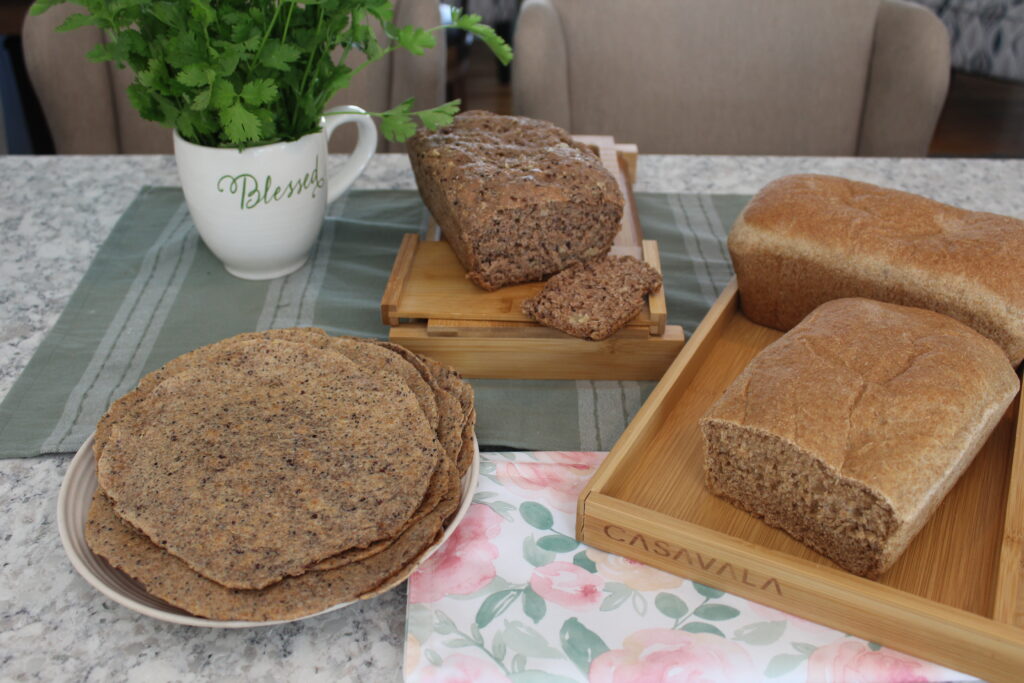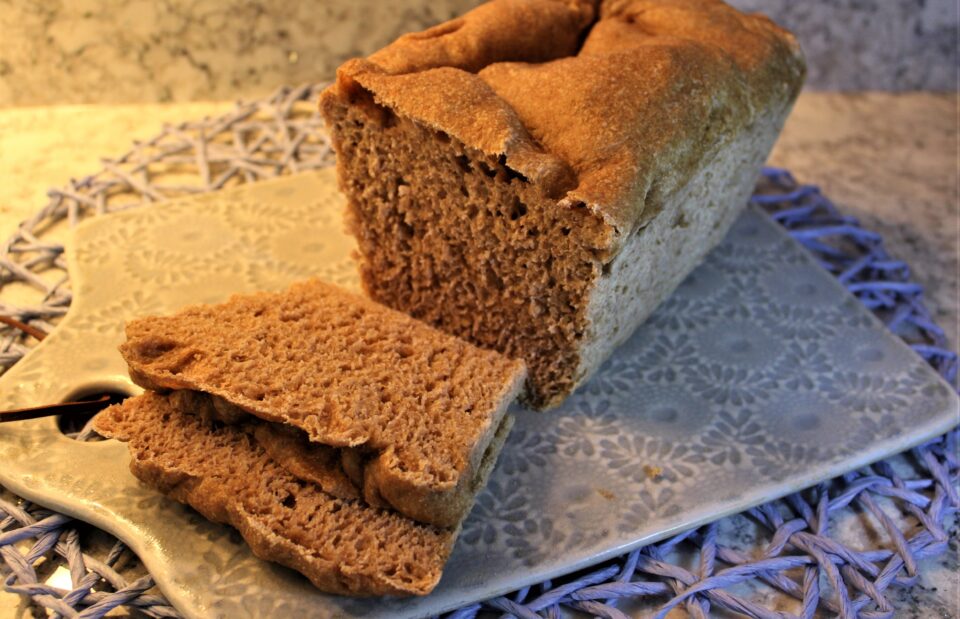The best part of using fresh milled flour for baking and sourdough bread is knowing all the goodness God created in the wheat is present in the bread! Learning about the ancient grains and bread making is also a treat to understand and incorporate in my daily life. I’ll give you a little history, tell you what I learned about making sourdough bread these past few months, and provide you a link to the easiest sourdough bread recipe I found. I’ll also place a link to the best video that showed me how to do it.
History of Sourdough
Although, evolutionists and Scientists teach humans were hunter gatherers before farming practices came to be, evidence is now emerging to tell a different story. Fourteen-thousand-year-old breadcrumbs from an archeological dig of Natufians in the area of the Jordan river reveal the remains of einkorn wheat, tubers, barley and oats (1). The new discovery dates flour making much older than previously thought and one researcher states maybe even as far back as hunter gathering times. It is a story similar to what we learn from Scripture.
The bible teaches that humans began farming practices with our first parent, Adam. After the fall, God told him he would work the ground in pain to eat of it all the days of his life. Among the thorns and thistles, Adam would eat the plants of the field by the sweat of his face (Genesis 3 18-19).
His son, Cain, was also a farmer. A worker of the ground, he brought to the Lord an offering from the fruit of the ground. Noah was told by God to take every sort of food that is eaten and store it up for his family and the animals (Genesis 6:21). After the flood, Noah became a man of the soil and planted a vineyard (Gen. 9:20).
The arduous task of separating the chaff and grinding the grain into a fine flour for bread must have been worth the effort. The first bread was a type of flatbread still eaten in the middle east, while the Egyptians are credited with allowing the bread to ferment. Sourdough bread found in Switzerland, is dated 3700 BCE. The bread developed gases to expand the loaf and a piece of the dough was removed and saved for adding to a fresh batch.
It is thought the dough picked up yeast from the air in a form of spontaneous fermentation. Later, yeasts were developed by bakers to make yeasted breads. However only wheat and rye varieties have enough gluten to form raised loaves.
I started using the fresh milled flour for all of my baking in September of 2021. Over the next few months, I began noticing a difference in my energy level and lack of sugar cravings. A few months later, I realized I did not get my usual sinus headache and drainage during our musty Ohio valley spring weather. I had watched Sue Brecker’s “Bread of Life” tutorial on the benefits of grain and found everything she said to be true.

Although I’m not an affiliated with this company, I found the resources at Bread Beckers very helpful! So, I bought Sue’s little red book and began making the Zojirushi versatile bread recipe. After months of fresh milling flour, making my tortillas, and experimenting I became interested in sourdough bread. If shortages continue in the food industry, I don’t want to depend on yeast to make a loaf of bread. However, living off tortillas and flatbread like Israel did for Passover is fine with me!
But since I’m a geek and love to learn new things, sourdough baking appealed to me.
Here’s is What I learned About Sourdough Baking with Fresh Milled Flour
- You need a good starter. A good starter is key to making a delicious loaf of bread. Don’t get me wrong, you can begin by making your own, but it will taste very sour when you do, and it won’t rise as well. I tried to make my own starter several times and it made a low rising bread with a beer-like taste. I’d almost give up until I met a very nice girl at a lady’s summit, and we started talking about food fermentation. She was kind enough to bring me some of her sourdough starter from Italy. She’s had this starter ten years! All I can say is…IT IS THE BEST! So, thanks Chaeney!
- You need patience. This is not a quick process. In fact, it is going to take 12 to 24 hours to make a loaf of bread. So be patient. On the other hand, it is very easy and requires minimal ingredients. For instance, you need fresh-milled grain, water, salt and starter. That’s it! I pick one day a week to make bread and plan my day accordingly. Mornings work better for my schedule and the first thing I do is get it out of the fridge and feed the starter. It will sit on the counter for about 6-8 hours (depending on room temperature) and when it peaks (doubles in size and is still foamy) it is ready to go into my fresh milled flour. I do all my other chores but keep an eye on the starter. When I notice it has doubled, I begin to mill my grain.
- Be prepared. I watched plenty of YouTube videos to get the process down. I suggest you do the same. It helps to see what to expect as people gather their supplies and show you how to knead the dough. Here is my favorite video that showed me how to do it, Easy Everyday Sourdough Bread: Full Method and Parchment Paper Baking Trick – YouTube. Find one that works best for you. My favorite recipe to use for this sourdough bread is at Savorthebest.com, it gives you step by step instructions also and alternatives to using a Dutch oven. I’ve done a Dutch oven, an iron skillet, and my loaf pans covered with aluminum foil…it tastes the same.
The fresh-milled wheat is very nice in the recipe above, but I use 4 cups instead of 4 and 1/4 cups. Most of the bakers I watched said to use a scale and measure in grams for best results. I have not done that, but I’m still experimenting. In applying the flour, water, and folding method, I look at the moisture of the dough and keep it sticky. I have not used the fridge to raise the dough overnight either.
Once you get comfortable making the bread with fresh milled flour, you can experiment with spices and making rolls. My bread is never perfect, but it tastes good. I was able to use the Easy Sourdough Bread Recipe to make cinnamon rolls this morning, and they were delicious. They were chewy on the inside and crusty on the outside, with a honey and cinnamon center.
I know God will bless you as you learn to master this process too! Have fun and remember, what God puts in the garden is good!
If you’re looking to learn more about fresh milled flour and baking with it let me know! You can attend a bread workshop in person or on zoom to get started. Also, if you need help getting healthy, I can help! Sign up here.
Below is a free download of my favorite grains and their nutritional value, it is available here and when you subscribe to my site! You’ll receive a weekly newsletter of tips, encouragement, and recipes! God bless you and enjoy your baking days.








